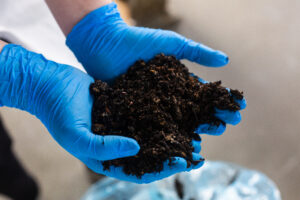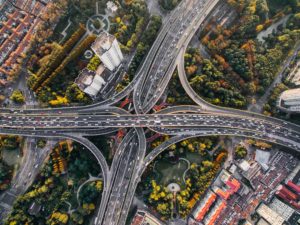July Was Smart Irrigation Month: How Sensor-based Smart Irrigation Tools Influence Agriculture
According to the World Bank, agriculture uses approximately 70% of global water withdrawals, with as much as 50% being wasted due to overwatering and inefficient systems. Meanwhile, farmers continue to make significant capital investments in on-farm irrigation facilities; over $2.64 billion was spent on US farms in 2013. To improve water use efficiency, startups are innovating, and farmers are deploying sensor-based smart irrigation systems utilizing irrigation intelligence based on real-time field data.
A sensor-based irrigation system can be broken down into three major components: sensors, data analytics software, and irrigation control automation. Sensors collect measurements from the surrounding environment and the crops, sending data to the cloud, wherein software conducts analysis and gives recommendations to farmers. In a fully automated system, sensors and software are also connected to the water infrastructure to control pumps and valves to autonomously execute precision irrigation schedules.
Effects of sensor-based smart irrigation tools
Watering plants at the right time with the right amount is the main value proposition for many smart irrigation startups. Many claimed that their technology can effectively reduce annual water consumption by up to 40%. Applying the exact amount of water a plant needs can also prevent fertilizer leaching, which is one of the most costly and widespread environmental problems in America. In addition, keeping plant conditions at optimum levels leads to healthier crops and can increase crop yields by 20% to 40%, as reported by multiple farmers’ testimonials.
According to CropX CEO, Tomer Tzach, smart irrigation solutions also contribute to energy conservation as they inform farmers on when and how to deploy irrigation pivots.
“These pivots are very energy-intensive. By knowing the field and only turning on pivots when needed, farmers can save a lot of money on their electricity bills,” said Tzach.
In 2016, a team of scientists at West Central Research and Extension Center, a research facility of the University of Nebraska Institute of Agriculture and Natural Resources, began testing and evaluating the performance of different sensors. This research project aims to help irrigators and producers alike understand the differences in each sensing method and conduct statistical analysis that could be used to improve the products.
Different types of smart sensors
There are three main categories of smart field sensors: soil, weather and plant.
Soil-based sensors are most commonly used to detect plant water stress. Installed at different key points across the field, these sensors collect relevant soil data such as moisture level, salinity, and electrical conductivity, which provide important information on a plant’s water demand. One of the first agritech startups in this field, Hortau, has been developing smart irrigation solutions using soil-based sensors since 2002. By monitoring soil tension, which directly affects a plant’s metabolism and water uptake, Hortau’s system can determine the precise amount of water available to the crop and notify farmers via its mobile application. In addition, Hortau’s wireless field control units can also enable growers to remotely perform irrigation activities, thereby reducing on-farm labor requirements. Similarly, CropX’s smart sensors capture soil moisture level at different depths of the ground. This enables farmers to adjust their irrigation plans according to real-time soil water availability and avoid excessive irrigation.

The second largest type of sensor is weather-based. Also referred to as evapotranspiration (ET) sensors, weather sensing instruments measure ultra-local environmental conditions essential for irrigation planning. Evapotranspiration data, which is the sum of water evaporation from the soil surface and plant transpiration, is recorded and analyzed with regional weather forecasts from public sources. Sencrop, a French agritech startup, has created connected weather stations that can collect climate readings like rainfall, temperature, and wind speed in the field. Sencrop’s software also produces customized weather forecasts and plant reports, equipping farmers with a range of data to evaluate their irrigation methods. As soil and weather sensing technologies are becoming more mature, many startups also working to combine the two methods to generate more accurate water predictions.
In comparison, plant-mounted sensors, which directly measure variations happening inside the plants, are still undergoing initial development phase led by academic institutions. Recently, scientists at Pennsylvania State University have proven that leaf thickness and electrical capacitance are suitable gauges for plant water status. Phytech is one of the few startups innovating in this area. Directly attached to a plant’s stalk or fruits, Phytech’s monitoring device can detect minute changes in plant diameter, for example, shrinking and swelling, which helps track water status, monitor fruit development, and alert growers of any yield-reducing symptoms in the field.
Ecosystem activities and investment landscape
An initial installment fee for the sensors followed by an annual software subscription payment is a common business model in this sector. With a growing number of entrants into the market, startups are also seeking ways to distinguish their products. For example, instead of a common standalone product offering, Semios offers irrigation management as a part of an all-inclusive crop management system which also comprises pest, frost and disease control.
Investment flows into agricultural smart irrigation have also been steadily increasing in the past five years. Since the beginning of 2018, 7 deals were made and $26.6M invested on a global scale. North America takes the geographic lead, making up over 94% of the 2018 YTD investment. Most notably, the Canadian government emerged as the single largest investor after underwriting $12.9M to support Canada-based smart irrigation startups.

Challenges
Since sensors are crop-agnostic, software must be adapted for growing different crops. Smart irrigation software requires an enormous amount of agronomical data to train algorithms to give water recommendations for growers in different parts of the world. Xiaodong Wang, co-founder and CEO of TalentCloud, a leading adaptive irrigation startup in China, believed that the lack of field data is holding back the development of smart irrigation in developing countries.
“Unlike the developed countries, we simply don’t have that much data to begin with” said Wang. “For each type of crops, the software must consider soil, climate and plant conditions, crop development cycles and local farming practices. It takes a lot of time and effort.” TalentCloud is seeking partnerships with academic institutions in China to tackle the data challenge.
Adoption rate for fully automated irrigation systems is another challenge and is significantly lower than sensors and software. While farmers’ reluctance to give up control on irrigation remains the biggest hurdle, the system stability of the technology and installation costs must also to be improved to achieve a wider adoption.
Outlook
As smart sensors are getting more saturated, startups are actively improving their irrigation software to create a lasting competitive edge. In the future, we expect to see continued innovation in plant-based sensors, more strategic partnerships through the industry vertical, as well as increased effort to achieve affordable autonomous irrigation.


